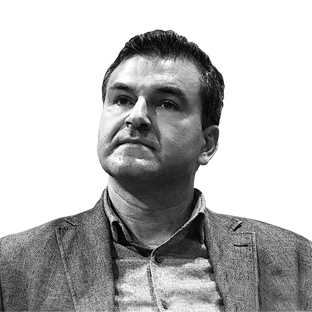As the left that won was the one that lost

The left suffered a profound inflection from the sixties, which was deepened and changed not only the political subject he intended to represent, but also the conceptual foundations themselves historically supported it. Since the beginning of the century, and especially between the beginning of the industrial age and the sixties, the left, in its various aspects, has exerted a determining influence on political, social and cultural life, particularly in the West. Even when divided between reformist and revolutionary currents, he maintained, essentially – despite serious failures on the concrete plane – a strong connection to the popular world, the ethics of social justice and the ideal of emancipation of the oppressed.
In recent decades, however, when the left gains determining spaces of influence on intellectual media, social communication organs, cultural sectors and strategic niches of educational and legal power, it confronts a paradoxical reality: its growing electoral irrelevance and systematic rejection by the popular classes. That is, the more it symbolically dominates the cultural and moral institutions of society, the more it moves away from the common man, which is no longer in language or the priorities of this new left.
The dominant left that emerges from the sixties and is consolidated in the following decades little or nothing has in common with the socialist, labor or even social democratic tradition, which, despite its flaws and ambiguities, also retained a popular rooting and a commitment to the concrete improvement of the living conditions of majorities. Even the democratic left that refused the twentieth -century totalitarisms maintained an ethical and universalist view of social justice. The new left breaks with this legacy and replaces it with an essentially symbolic, fragmented and moralistic logic.
This mutation is not just political. It is anthropological. The new left is no longer defined by the struggle for fairer material conditions, but through subjective identities, abstract moral categories and a technocratic view of the social world. It is despised, when it does not actively distort the popular values and the community ties that historically supported their field of action. Its vocabulary is no longer that of solidarity or fraternity, but of historical guilt, symbolic reparation and behavioral engineering.
In this context, it is necessary to distinguish this new hegemonic, identity, elitist and technocratic left from another left, now minority and even proscribed, which we could call heretics or dissident. The latter retains a concern with ethics, community rooting and the meaning of the common good. It does not reject social justice, but refuses to replace it with a permanent cultural war, a policy of offense and censorship, and a new class moralism that despises the ordinary values of the majority.
The hegemony of the identity left is not explained without reference to the decisive influence of the US university campuses, where a new ideological orthodoxy was forged. The gym replaced the factory as a place of political discourse production. The class struggle was replaced by the narrative struggle. Concrete experience was subordinate to abstract theory. And the people, as a political subject, were delegitimized as reactionary, ignorantly or structurally oppressive.
The result of this transformation is clear: the left has become increasingly a symbolic device of moral and language management, at the service of cultural and institutional elites, and less and less a popular force of social transformation. This mutation largely explains its increasing isolation, the emergence of populist alternatives and the widespread discredit of progressivism as an emancipating project. The left that promised to emancipate became a censorship left, which educates, that reprogram. And he lost, in the process, the popular soul that gave him meaning.
In the 21st century, it remains a disturbing puzzle: Why don’t they predominate, or at least not receive the proper prominence, truly critical and nonconformist thinkers such as Jonathan Crary, David Graeber, Richard Sennett, Jean-Claude Michéa or Pier Paolo Pasolini? The response lies largely in the fact that these authors do not identify with the new dominant left. It is a left that, under a progressive appearance, reveals itself deeply liberal in customs and thought, identity in its political grammar, technocratic in solutions and moralist in its cultural practice. It is a left incompatible with a critical tradition rooted in ethical values, communitarian views and libertarian or even conservative sensitivities, in a moral and anthropological sense.
Crary, Sennett, Graeber, Frank, Kurz, Michéa or Pasolini, for example and others represent a left that does not submit to the dogmatism of new orthodoxy. Therefore, they are invisible or ignored. They denounce, lucidly, what the new left no longer wants to see: their own loss of contact with the real world, work, rooting and ordinary life. Deep down, in the internal circuits of political, cultural and intellectual power, he triumphed the liberal, identity, technocratic and symbolic left. Admittedly, the authors mentioned have important differences, but what unites them is precisely their non -identification with the dominant left.
This left has become dominant because it has become functional to the new power centers that are predominantly hyperliberal and made up of progressive elites. By abandoning radical criticism of capitalism, economic inequality, precarious work, and cultural alienation, it was not only able to adapt to the logic of the system but to occupy the symbolic spaces of hegemony: universities, foundations, media, international organizations and legal appliances. Instead of confronting power, he was part of him in the form of moral avant-garde, replacing politics with pedagogy, justice with language and social struggle for the curatorship of identities. This deviation was favored by the collapse of the organized working class, the fragmentation of society and the triumph of cultural hyperliberalism, which offered to the new left a mission: managing symbolic diversity without touching the economic structure. This is how the left was no longer dangerous. And for that very reason, he could win.
The new left easily integrated into the logic of dominant liberalism because it shares its axial concepts: the idea of unrestricted individual freedom, the glorification of the unlimited, the paradigm of infinite economic growth, the belief that everything can be resolved by social engineering and technology, the abstract apology of individual rights, the exaltation of mobility, moral deregulation and progressism and progress as ideology of permanent deconstructivism. These elements have become structuring not only for the affirmation of new progressivism, but especially for the totalitarian expansion of global hyperliberalism.
The left, once criticism of the system and allied of the working classes, is no longer an opponent of the global elite. He began to integrate in it, serving his symbolic designs and contributing to his ethical legitimation. This convergence with cosmopolitan hyperliberalism dissolved the latest resistances that still separated the left from a globalized, technocratic and indifferent economic power to concrete cultural and social realities.
Left voices that dared to denounce this mutation were silenced, marginalized or caricatured as retrograde and conservative, only for continuing to defend community values, cultural, popular moral rooting and a critique of mercantile logic that reduces the human being to appeal. The old left became obsolete not for lack of current, but because it no longer suits market demands or the new moralist discourse that governs global cultural hegemony.
The new left broke with the horizon of class struggle and criticism of capital. In its place, it promoted a policy based on symbolic fragmentation, centered on racial, sexual, cultural and linguistic categories, often alien to the concrete material conditions of the majority of the population. This deviation has become even more severe in a context in which the middle class is proletarianized, the work is degraded and precarious, and new forms of work servitude emerge under the mantle of entrepreneurship or “flexibility”.
The dignity of labor, the stability of social relations and the idea of a common good have been replaced by a permanent cultural war, where the essential is the moral reason, and not those who suffer the real consequences of economic structures. Thus, the dominant left has gained positions of symbolic power – universities, humanities departments, legal appliances, media – and transformed cultural power into an instrument of moral reform and discursive surveillance, turned off from popular reality. Those who dominate the vocabulary dominate the real perception, as George Orwell intuited by anticipating the subtle forms of modern totalitarianism.
The new, deeply technological and financial capitalism, found in this new left its ideal ally. It provides the moral security that justifies the excesses of capital under the disguise of diversity and symbolic justice. Today, multinational companies can sponsor “anti -racist” events or “inclusion” campaigns, while exploiting workers, dismantling communities, feeding wars and deepening the dehumanization of the economy. The left, instead of confronting this reality, became its ethical varnish: a facade of good intentions in the service of a deeply unfair order.
The left that gained symbolic, institutional and moral hegemony has lost its popular roots, their critical soul and their transformative function.








